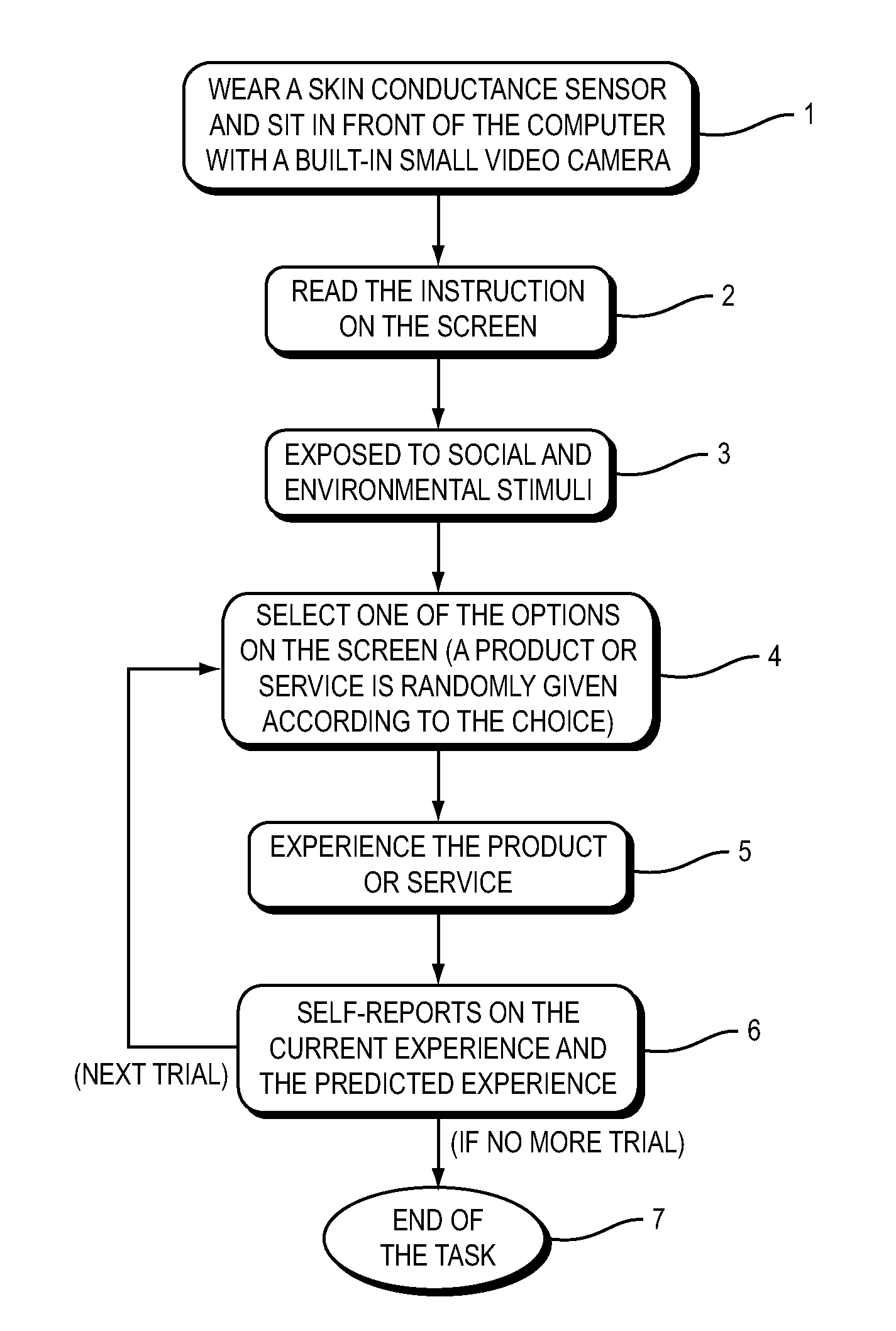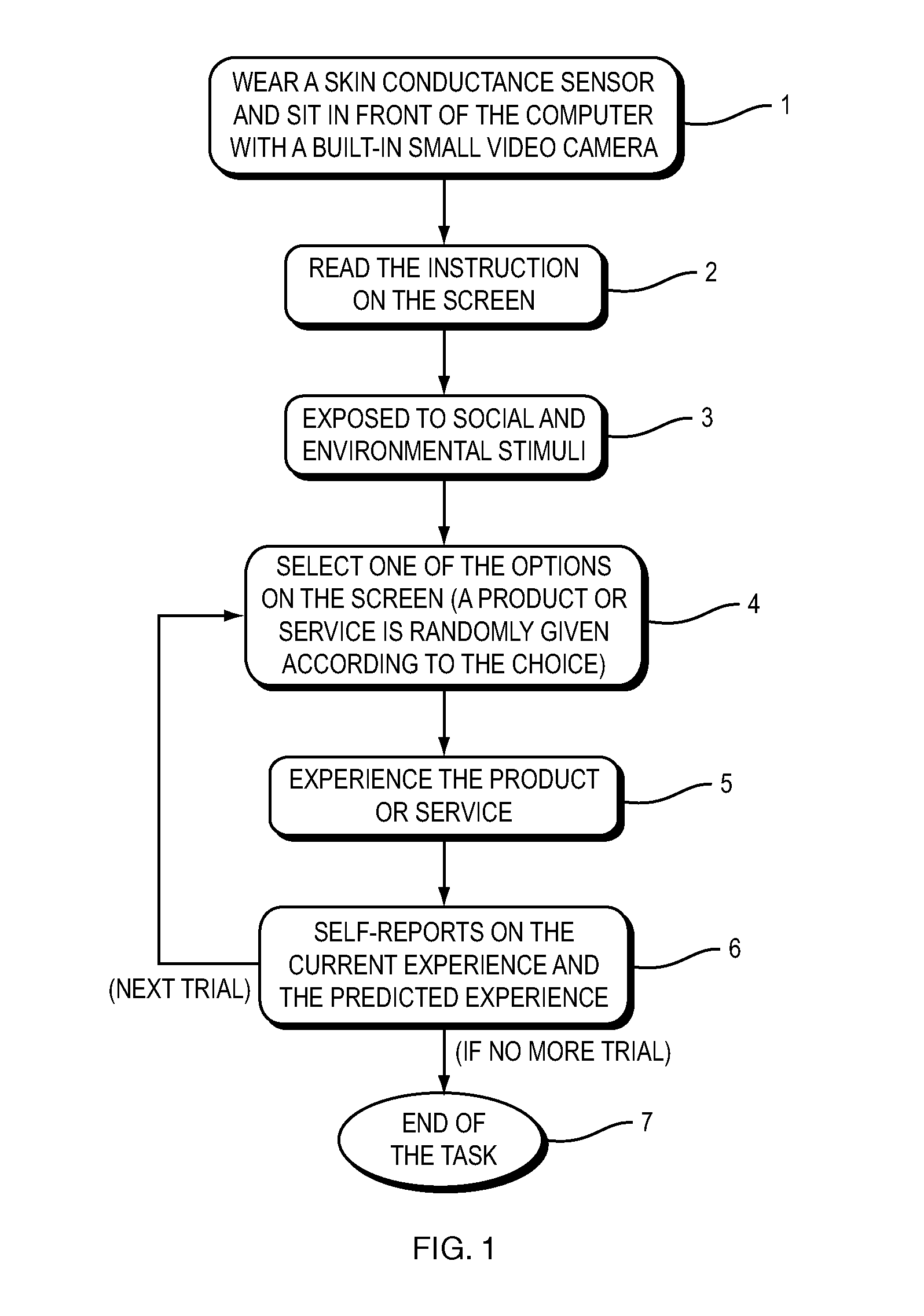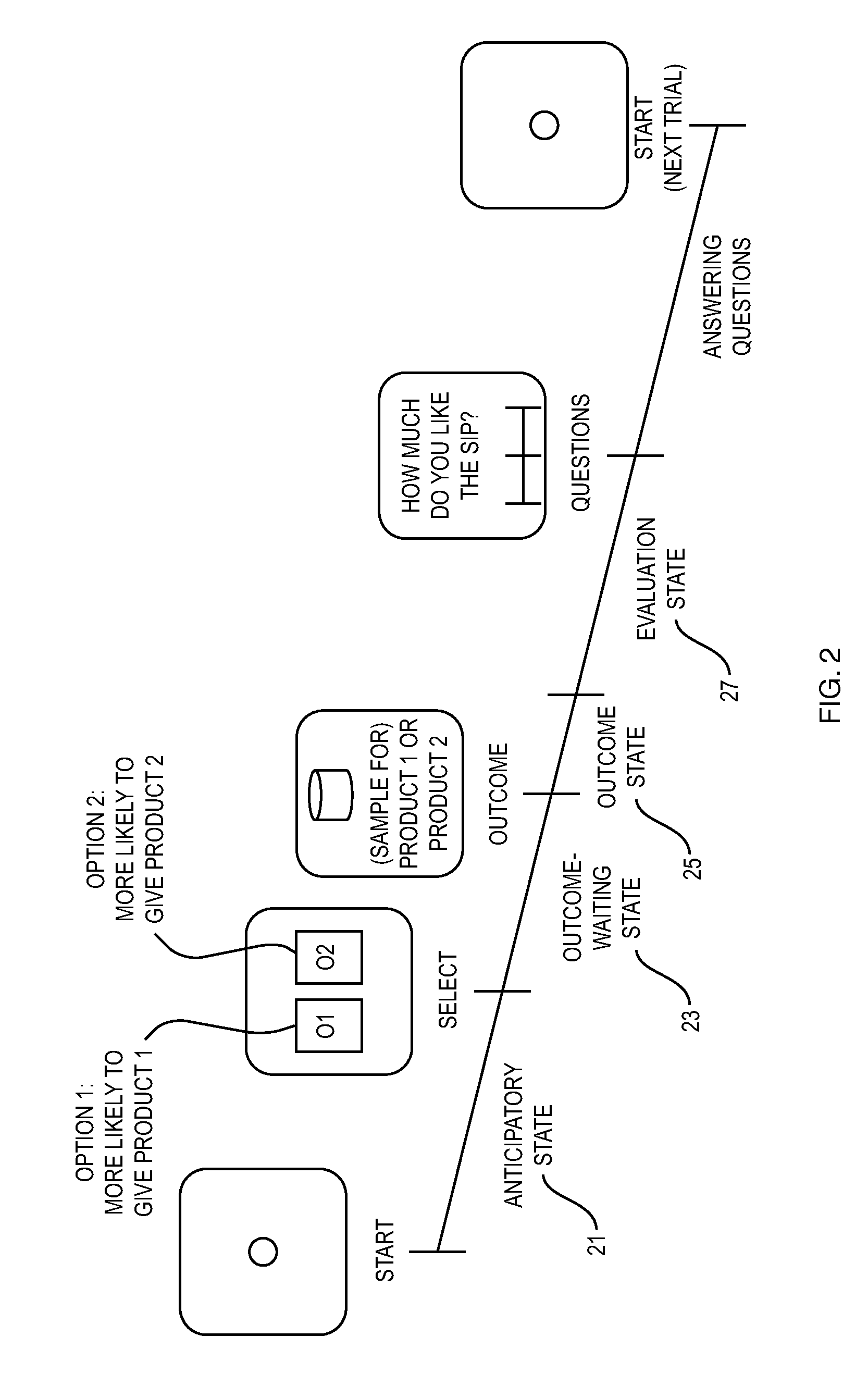Multimodal Affective-Cognitive Product Evaluation
a cognitive and product evaluation technology, applied in the field of consumer preference research, can solve the problem that participants in an experiment are likely to cognitively bias their self-reporting
- Summary
- Abstract
- Description
- Claims
- Application Information
AI Technical Summary
Benefits of technology
Problems solved by technology
Method used
Image
Examples
Embodiment Construction
[0040]In an exemplary implementation of this invention, repeated random-outcome trials are used to assess consumer preferences, as follows: In each trial, a participant is asked to select one of two beverage dispensers. Each beverage dispenser randomly dispenses one beverage (Product 1) some times and another beverage (Product 2) some times. The probability that Product 1 will be dispensed is higher for one beverage dispenser than the other dispenser. The participant is not told the probability for either dispenser. The participant selects a dispenser, and a beverage is dispensed from it into a cup. Each cup is numbered or otherwise labeled, to show whether it holds Product 1 or Product 2. Thus, the participant can tell, by looking at the cup, whether Product 1 or Product 2 has been dispensed from the selected dispenser. The participant sips the beverage. The participant then self-reports an evaluation of the product, by answering one or more questions relating to the product. Repea...
PUM
 Login to View More
Login to View More Abstract
Description
Claims
Application Information
 Login to View More
Login to View More - R&D
- Intellectual Property
- Life Sciences
- Materials
- Tech Scout
- Unparalleled Data Quality
- Higher Quality Content
- 60% Fewer Hallucinations
Browse by: Latest US Patents, China's latest patents, Technical Efficacy Thesaurus, Application Domain, Technology Topic, Popular Technical Reports.
© 2025 PatSnap. All rights reserved.Legal|Privacy policy|Modern Slavery Act Transparency Statement|Sitemap|About US| Contact US: help@patsnap.com



